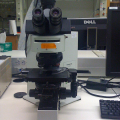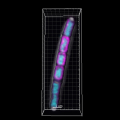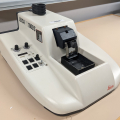The new fast resonant scanning Leica SP8 confocal microscope is a high-tech powerhouse. The resonant scanning unit allows confocal images at 28 frames per second full-frame, and faster for smaller images. It is equipped with a cryo-incubator stage allowing stable temperature control from -2°C to 50°C enabling live real-time long time-lapse imaging. The recent upgrade has added FLIM (fluorescence lifetime imaging microscopy) capabilities!













